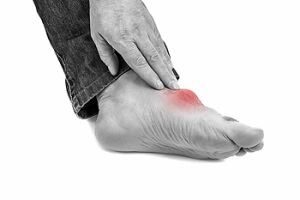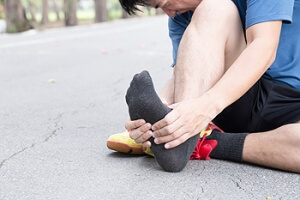BLOG

What Can Cause Gout?
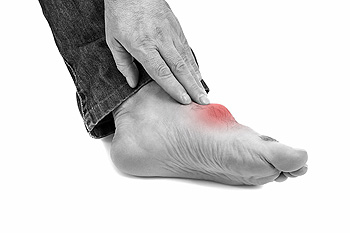 Patients who are afflicted with gout often experience severe pain and discomfort in the big toe and surrounding areas. The symptoms that are often associated with this condition can include swelling, tenderness, and inflammation. It is caused by an excess of uric acid in the bloodstream, and this can produce crystals that lodge in the joints of the big toe. Patients who have existing medical conditions may be more susceptible to contracting gout. These can include diabetes, poor kidney function, high blood pressure, and obesity. Additionally, eating foods that are high in purine levels can lead to gout. These can consist of excessive red meat, seafood, and alcohol. If you have this painful condition, it is advised that you seek the counsel of a podiatrist who can properly diagnosis and treat this condition.
Patients who are afflicted with gout often experience severe pain and discomfort in the big toe and surrounding areas. The symptoms that are often associated with this condition can include swelling, tenderness, and inflammation. It is caused by an excess of uric acid in the bloodstream, and this can produce crystals that lodge in the joints of the big toe. Patients who have existing medical conditions may be more susceptible to contracting gout. These can include diabetes, poor kidney function, high blood pressure, and obesity. Additionally, eating foods that are high in purine levels can lead to gout. These can consist of excessive red meat, seafood, and alcohol. If you have this painful condition, it is advised that you seek the counsel of a podiatrist who can properly diagnosis and treat this condition.
Gout is a painful condition that can be treated. If you are seeking treatment, contact one of our podiatrists from Livingston Foot Care Specialists. Our doctors will treat your foot and ankle needs.
What Is Gout?
Gout is a form of arthritis that is characterized by sudden, severe attacks of pain, redness, and tenderness in the joints. The condition usually affects the joint at the base of the big toe. A gout attack can occur at any random time, such as the middle of the night while you are asleep.
Symptoms
- Intense Joint Pain - Usually around the large joint of your big toe, and it most severe within the first four to twelve hours
- Lingering Discomfort - Joint discomfort may last from a few days to a few weeks
- Inflammation and Redness -Affected joints may become swollen, tender, warm and red
- Limited Range of Motion - May experience a decrease in joint mobility
Risk Factors
- Genetics - If family members have gout, you’re more likely to have it
- Medications - Diuretic medications can raise uric acid levels
- Gender/Age - Gout is more common in men until the age of 60. It is believed that estrogen protects women until that point
- Diet - Eating red meat and shellfish increases your risk
- Alcohol - Having more than two alcoholic drinks per day increases your risk
- Obesity - Obese people are at a higher risk for gout
Prior to visiting your podiatrist to receive treatment for gout, there are a few things you should do beforehand. If you have gout you should write down your symptoms--including when they started and how often you experience them, important medical information you may have, and any questions you may have. Writing down these three things will help your podiatrist in assessing your specific situation so that he or she may provide the best route of treatment for you.
If you have any questions, please feel free to contact our office located in North Bellmore, NY . We offer the newest diagnostic and treatment technologies for all your foot care needs.
Everything You Need to Know About Gout
Gout, typically found in diabetic patients, is an unusually painful form of arthritis caused by elevated levels of uric acid in the bloodstream. The condition typically strikes the big joint on the big toe. It has also been known to strike the knees, elbows, fingers, ankles and wrists—generally anywhere that has a functioning, moving joint.
The high level of uric acid in a person’s bloodstream creates the condition known as hyperuricema—the main cause of gout. Genetic predisposition occurs in nine out of ten sufferers. The children of parents who suffer gout will have a two in ten chance of developing the condition as well.
This form of arthritis, being particularly painful, is the leftover uric acid crystallizing in the blood stream. The crystallized uric acid then travels to the space between joints where they rub, causing friction when the patient moves. Symptoms include: pain, redness, swelling, and inflammation. Additional side effects may include fatigue and fever, although reports of these effects are very rare. Some patients have reported that pain may intensify when the temperature drops, such as when you sleep.
Most cases of gout are easily diagnosed by a podiatrist’s assessment of the various symptoms. Defined tests can also be performed. A blood test to detect elevated levels of uric acid is often used as well as an x-ray to diagnose visible and chronic gout.
Treatment for gout simply means eliminating symptoms. Non-steroid anti-inflammatory drugs or NSAIDs (Colchicine and other corticosteroid drugs, etc.) will quell the redness, the swelling, and the inflammation. However, managing your diet, lifestyle changes, and using preventative drugs are all helpful toward fully combating the most severe cases.
Those that lead an inactive lifestyle are at a higher risk for gout. Any amount of exercise decreases the probability of repeat encounters with the condition. Reducing your consumption of red meat, sea food, and fructose-sweetened drinks also reduces the likelihood of chronic gout as well.
Ingesting Vitamin C, coffee, and particular dairy products can help with maintaining a healthy lifestyle. There are new drugs out on the market that inhibit the body’s production of uric acid-producing enzymes. However, reducing or eliminating your overall levels of uric acid is the best remedy to ensuring you lead a gout-free life.
Common Types of Foot Pain
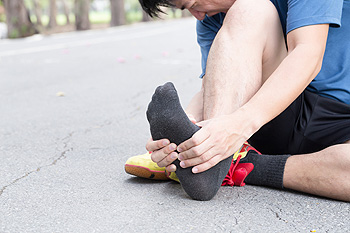 If you have pain in the foot or ankle area, some conditions are likely to be expected. Seven specific ailments are very common among patients. The first is plantar fasciitis. Signs of this include soreness in the arch or heel that is severe in the morning, and fades throughout the day. Another infliction is a stress fracture, which consists of tiny cracks in the bones that cause pain and tenderness. Additionally, if you twisted your ankle, and then it swells, you may have a sprained ankle. For pain near the toes, a bump at the base of the big toe could indicate the presence of a bunion. If you are an athlete, you may have “turf toe,” which occurs when the big toe is pulled back too far. For suffering near the heel and calf, Achilles tendonitis could be the source. Finally, a heel spur could be creating extra discomfort. These seven conditions may be the cause of your foot or ankle issue. Please consult with a podiatrist to receive a proper diagnosis and treatment plan.
If you have pain in the foot or ankle area, some conditions are likely to be expected. Seven specific ailments are very common among patients. The first is plantar fasciitis. Signs of this include soreness in the arch or heel that is severe in the morning, and fades throughout the day. Another infliction is a stress fracture, which consists of tiny cracks in the bones that cause pain and tenderness. Additionally, if you twisted your ankle, and then it swells, you may have a sprained ankle. For pain near the toes, a bump at the base of the big toe could indicate the presence of a bunion. If you are an athlete, you may have “turf toe,” which occurs when the big toe is pulled back too far. For suffering near the heel and calf, Achilles tendonitis could be the source. Finally, a heel spur could be creating extra discomfort. These seven conditions may be the cause of your foot or ankle issue. Please consult with a podiatrist to receive a proper diagnosis and treatment plan.
Foot and ankle trauma is common among athletes and the elderly. If you have concerns that you may have experienced trauma to the foot and ankle, consult with one of our podiatrists from Livingston Foot Care Specialists. Our doctors will assess your condition and provide you with quality foot and ankle treatment.
Foot and ankle trauma cover a range of injuries all over the foot; common injuries include:
- Broken bones
- Muscle strains
- Injuries to the tendons and ligaments
- Stress fractures
Symptoms
Symptoms of foot and ankle injuries vary depending on the injury, but more common ones include:
- Bruising
- Inflammation/ Swelling
- Pain
Diagnosis
To properly diagnose the exact type of injury, podiatrists will conduct a number of different tests. Some of these include sensation and visual tests, X-rays, and MRIs. Medical and family histories will also be taken into account.
Treatment
Once the injury has been diagnosed, the podiatrist can than offer the best treatment options for you. In less severe cases, rest and keeping pressure off the foot may be all that’s necessary. Orthotics, such as a specially made shoes, or immobilization devices, like splints or casts, may be deemed necessary. Finally, if the injury is severe enough, surgery may be necessary.
If you have any questions, please feel free to contact our office located in North Bellmore, NY . We offer the newest diagnostic and treatment technologies for all your foot care needs.
Read more about Foot and Ankle TraumaFoot and Ankle Trauma
The foot and ankle area works with 26 bones, 33 joints, and more than 100 different muscles, tendons, and ligaments. Problems with any parts of this network can result in some kind trauma within the foot and ankle area. Most foot and ankle trauma is a result of aging or intense activities such as sports. However, trauma in this area can also be the result of simple things such as wearing heels too much or even walking on an uneven pavement. There are several kinds of symptoms related to specific injuries, and there are also several different treatments that could be used as well.
Foot Injuries and Symptoms
Some common injuries in the feet include stress fractures and bunions. Stress fractures are small cracks in a bone or severely bruised parts of the bone. This type of injury is caused by intense and repetitive activity, which is found in actions involved with sports and exercise. Symptoms of this injury include pain, swelling, tenderness, and possible bruising. Another common injury with bones is also bunions, which are bony bumps typically formed on the big and little toes. This injury is typically a result from wearing high heels and unfit shoes. Some common symptoms are swelling around the big and little toe areas, as well as pain and restricted movement.
Ankle Injuries and Symptoms
The common injuries associated with ankle trauma consist of sprains, strains, and fractures. These injuries are defined by the type of tissue that has been damaged. Fractures are breaks within the bones caused by sudden impacts to the area. Sprains relate to any damage of the ligaments, commonly caused by being stretched beyond their normal range of motion. Strains are attributed to damage of the muscles and tendons from being pulled too far. Symptoms of these injuries include severe pain, limited range of motion, and swelling.
Diagnosis and Treatment
Since there are several types of injuries with a variety of symptoms, it is important to see a podiatrist about your condition. Podiatrists can run a variety of tests to diagnose an injury accurately. This includes physical examinations, X-rays, or MRIs. A podiatrist may even run a stress test, which is an X-ray taken while pressure is applied to the damaged area. Once your injury has been diagnosed, the doctor may have you wear a cast or a splint, or gradually develop your range of motion. Severe injuries may require physical therapy or even surgery if necessary. If you have any concerns from past foot and ankle trauma experiences, consult with one of our podiatrists from Livingston Foot Care Specialists. Our doctors can assess your condition and provide you with quality foot and ankle treatment.
If you have any questions, please feel free to contact our office located in North Bellmore, NY . We offer the newest diagnostic and treatment technologies for all your foot care needs.
Types of Foot Pain
 The feet are comprised of numerous bones, tendons, and ligaments, and are considered to be the foundation of the body. It is important to maintain proper foot care, as this can help to prevent different types of foot pain from occurring. The condition that is known as athlete’s foot may cause severe itching between the toes and on the bottom of the feet. It is caused by a fungus that lives in warm and damp environments, and may be avoided if appropriate shoes are worn while in public areas. A large bump that forms on the side of the big toe may be a bunion, and can develop from genetic factors, or from wearing shoes that do not fit correctly. Ingrown toenails often produce pain and discomfort, and may be avoided when the toenails are trimmed properly. If you have any type of foot pain, it is strongly suggested that you consult with a podiatrist who can offer the best course of treatment for you.
The feet are comprised of numerous bones, tendons, and ligaments, and are considered to be the foundation of the body. It is important to maintain proper foot care, as this can help to prevent different types of foot pain from occurring. The condition that is known as athlete’s foot may cause severe itching between the toes and on the bottom of the feet. It is caused by a fungus that lives in warm and damp environments, and may be avoided if appropriate shoes are worn while in public areas. A large bump that forms on the side of the big toe may be a bunion, and can develop from genetic factors, or from wearing shoes that do not fit correctly. Ingrown toenails often produce pain and discomfort, and may be avoided when the toenails are trimmed properly. If you have any type of foot pain, it is strongly suggested that you consult with a podiatrist who can offer the best course of treatment for you.
Foot Pain
Foot pain can be extremely painful and debilitating. If you have a foot pain, consult with one of our podiatrists from Livingston Foot Care Specialists. Our doctors will assess your condition and provide you with quality foot and ankle treatment.
Causes
Foot pain is a very broad condition that could be caused by one or more ailments. The most common include:
- Bunions
- Hammertoes
- Plantar Fasciitis
- Bone Spurs
- Corns
- Tarsal Tunnel Syndrome
- Ingrown Toenails
- Arthritis (such as Gout, Rheumatoid, and Osteoarthritis)
- Flat Feet
- Injury (from stress fractures, broken toe, foot, ankle, Achilles tendon ruptures, and sprains)
- And more
Diagnosis
To figure out the cause of foot pain, podiatrists utilize several different methods. This can range from simple visual inspections and sensation tests to X-rays and MRI scans. Prior medical history, family medical history, and any recent physical traumatic events will all be taken into consideration for a proper diagnosis.
Treatment
Treatment depends upon the cause of the foot pain. Whether it is resting, staying off the foot, or having surgery; podiatrists have a number of treatment options available for foot pain.
If you have any questions, please feel free to contact our office located in North Bellmore, NY . We offer the newest diagnostic and treatment technologies for all your foot care needs.
Foot Pain
Our feet are arguably the most important parts of our bodies because they are responsible for getting us from place to place. However, we often don’t think about our feet until they begin to hurt. If you have pain in your feet, you need to first determine where on the foot you are experiencing it to get to the root of the problem. The most common areas to feel pain on the foot are the heel and the ankle.
Heel pain is most commonly attributed to a condition called plantar fasciitis. Plantar fasciitis occurs when the plantar fascia, which is the band of tough tissue connecting the heel bone to the toes becomes inflamed. Plantar fasciitis pain is usually worse in the morning, and it tends to go away throughout the day. If you have plantar fasciitis, you should rest your foot and do heel and foot muscles stretches. Wearing shoes with proper arch support and a cushioned sole has also been proven to be beneficial.
Some common symptoms of foot pain are redness, swelling, and stiffness. Foot pain can be dull or sharp depending on its underlying cause. Toe pain can also occur, and it is usually caused by gout, bunions, hammertoes, ingrown toenails, sprains, fractures, and corns.
If you have severe pain in your feet, you should immediately seek assistance from your podiatrist for treatment. Depending on the cause of your pain, your podiatrist may give you a variety of treatment options.
Laser Treatment of Toenail Fungus
If you have toenail fungus, laser tr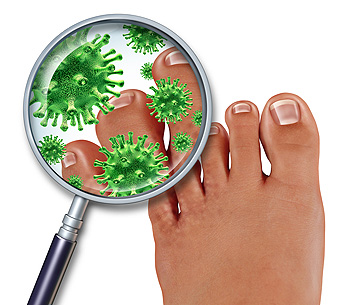 eatment may be the answer. Some symptoms of fungal nails include yellow, white, or brown nail discoloration, thickening of the nail or change in texture, change in shape of the nail and any flaky debris that is present under or on the nail. The FDA has approved a few different types of laser devices for the treatment of onychomycosis, which is another name for a fungal nail infection. Some of the laser devices include PinPointe Footlaser, GenesisPlus and Noveon. These laser devices kill off the nail fungus by emitting pulses of energy that impart heat to the infected tissue on the nail. When the fungus on the nail absorbs the heat from the laser treatment, it will begin to die off. While some patients will have success with a single laser treatment, additional treatments can be prescribed depending on the results. This most often depends on the type of laser treatment being utilized. Laser treatment can be a more expensive method, but it also happens to be the most efficient. If you are dealing with toenail fungus and are interested in laser treatment, consult with a podiatrist.
eatment may be the answer. Some symptoms of fungal nails include yellow, white, or brown nail discoloration, thickening of the nail or change in texture, change in shape of the nail and any flaky debris that is present under or on the nail. The FDA has approved a few different types of laser devices for the treatment of onychomycosis, which is another name for a fungal nail infection. Some of the laser devices include PinPointe Footlaser, GenesisPlus and Noveon. These laser devices kill off the nail fungus by emitting pulses of energy that impart heat to the infected tissue on the nail. When the fungus on the nail absorbs the heat from the laser treatment, it will begin to die off. While some patients will have success with a single laser treatment, additional treatments can be prescribed depending on the results. This most often depends on the type of laser treatment being utilized. Laser treatment can be a more expensive method, but it also happens to be the most efficient. If you are dealing with toenail fungus and are interested in laser treatment, consult with a podiatrist.
Laser treatment can be an effective way to get rid of toenail fungus. If you have any questions about laser treatment, consult with one of our podiatrists from Livingston Foot Care Specialists. Our doctors will assess your condition and provide you with quality treatment for fungal nails.
What Are Toenail Fungal Infections?
Onychomycosis, or fungal infection of the nail, is a relatively common and non-serious condition. Around 10 percent of U.S. citizens are afflicted with fungal nails. Common forms of fungus that infect the nail include dermatophytes, yeasts, and molds.
Symptoms of Toenail Fungal Infections Include:
- Nail thickening
- Brittleness of the nail
- Discoloration of the nail
Diagnosis for Fungal Nails
Fungal infections are diagnosed by fungal culture and microscopy. This will rule out any other conditions such as nail trauma, psoriasis, lichen planus, and onychogryphosis.
What Is Laser Treatment?
Laser treatment is a non-invasive, safe, quick, and painless procedure that uses the heat from a laser to kill fungus in the nail. Each infected nail is targeted with a laser for several minutes. The treatment is usually utilized several different times over a select period. During this time, a podiatrist will keep an eye on the infection.
If you have any questions, please feel free to contact our office located in North Bellmore, NY . We offer the newest diagnostic and treatment technologies for all your foot care needs.
Laser Treatment for Fungal Nails
A new treatment for fungal nails, or onychomycosis, which has grown in popularity in recent years, is laser treatment. Laser treatment involves the use of a laser that kills fungus in the toenail with heat. Laser therapy causes no side effects and does not affect nearby healthy tissue.
Toenail fungus afflicts almost 10 percent of the U.S. population and is more common among the elderly. The most common symptom of toenail fungus is the discoloration and thickening of the nail. The nail can also become brittle and a foul smell may be produced. In rare cases, pain might be present. While it is not a serious condition, it can lead to a perception of disgust amongst those it affects. There are several different fungi that cause fungal infections. These include dermatophyte, yeast, and mold. The most common of these is dermatophyte.
Diagnosis for fungal nails involves a podiatrist utilizing microscopy and fungal cultures. This will allow the doctor to determine whether it is a fungus or another condition, such as lichen planus, psoriasis, nail damage, and onychogryphosis.
Fungus in the nails can be hard to get rid of with over-the-counter drugs. This is due to the nail being hard and protective, with fungus able to slip between the nail bed and plate. Furthermore the slow growth of the nail increases the difficulty of fungus going away. Laser treatment seeks to get around this by directly penetrating through the nail and killing the fungus. The laser is used on each infected nail for a couple of minutes. Patients then typically return several weeks or months later for another laser treatment. During this time the podiatrist will routinely observe the foot and infection. It is also recommended to wear clean socks and shoes and allow the feet to dry and breathe to prevent toenail fungus.
Laser treatment is still a relatively new treatment and not all podiatrists have laser machines. Ask your podiatrist if they do laser treatment for toenail fungus and if it is right for you.
Heel Spur Facts
A heel spur is a bony protruding outgr owth on the bone of the heel. They can be located either at the back of the heel or under it. Heel spurs located at the back of the heel are most often associated with inflammation of the Achilles tendon, which can cause tenderness and heel pain. Heel spurs will be diagnosed based on if you have a history of heel pain and if there is tenderness at the bottom of the heel. An X-Ray is typically required to confirm this. Some treatments for heel spurs include applying ice to the spot of the spur, orthotic devices or shoe inserts, anti-inflammatory medications such as Aleve and Advil, cortisone injections and sometimes surgery. Generally, heel spurs don’t lead to any long term conditions, as they usually respond well to the treatments mentioned previously. If you feel you may have developed a heel spur, it is advised that you go see a podiatrist.
owth on the bone of the heel. They can be located either at the back of the heel or under it. Heel spurs located at the back of the heel are most often associated with inflammation of the Achilles tendon, which can cause tenderness and heel pain. Heel spurs will be diagnosed based on if you have a history of heel pain and if there is tenderness at the bottom of the heel. An X-Ray is typically required to confirm this. Some treatments for heel spurs include applying ice to the spot of the spur, orthotic devices or shoe inserts, anti-inflammatory medications such as Aleve and Advil, cortisone injections and sometimes surgery. Generally, heel spurs don’t lead to any long term conditions, as they usually respond well to the treatments mentioned previously. If you feel you may have developed a heel spur, it is advised that you go see a podiatrist.
Heel spurs can be incredibly painful and sometimes may make you unable to participate in physical activities. To get medical care for your heel spurs, contact one of our podiatrists from Livingston Foot Care Specialists. Our doctors will do everything possible to treat your condition.
Heels Spurs
Heel spurs are formed by calcium deposits on the back of the foot where the heel is. This can also be caused by small fragments of bone breaking off one section of the foot, attaching onto the back of the foot. Heel spurs can also be bone growth on the back of the foot and may grow in the direction of the arch of the foot.
Older individuals usually suffer from heel spurs and pain sometimes intensifies with age. One of the main condition's spurs are related to is plantar fasciitis.
Pain
The pain associated with spurs is often because of weight placed on the feet. When someone is walking, their entire weight is concentrated on the feet. Bone spurs then have the tendency to affect other bones and tissues around the foot. As the pain continues, the feet will become tender and sensitive over time.
Treatments
There are many ways to treat heel spurs. If one is suffering from heel spurs in conjunction with pain, there are several methods for healing. Medication, surgery, and herbal care are some options.
If you have any questions feel free to contact our office located in North Bellmore, NY . We offer the latest in diagnostic and treatment technology to meet your needs.


